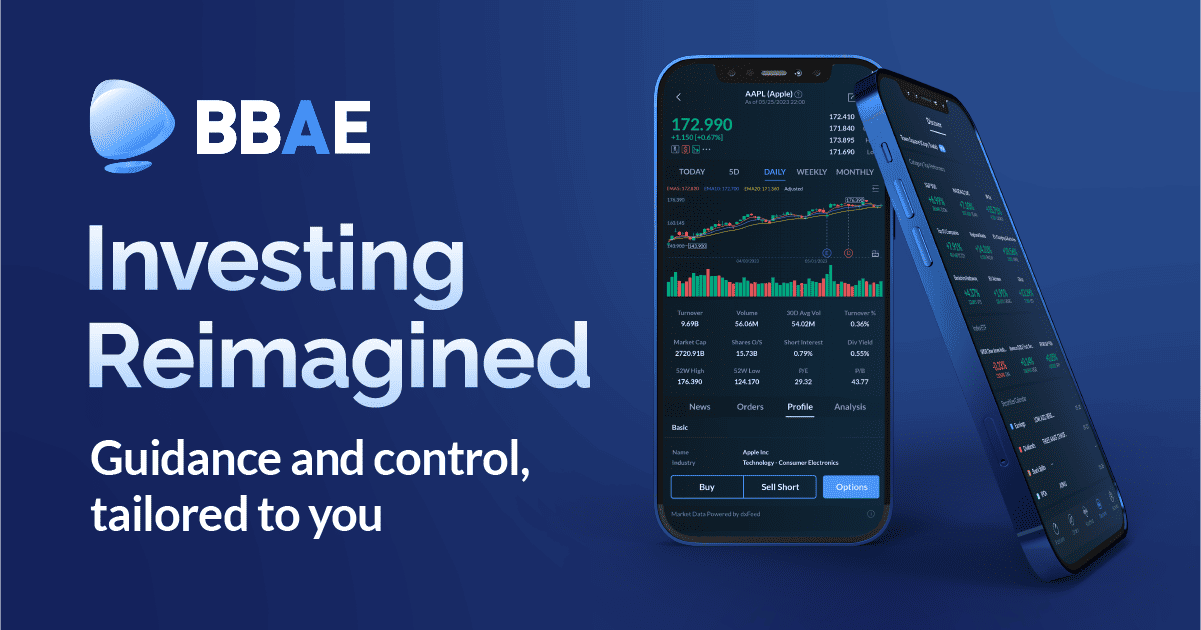Datadog (DDOG) – Intro & Earnings Review – February 17, 2024

Datadog is a new name in the Stock Market Nerd coverage network. I wanted to spell out the various pieces of its niche to set the table for future coverage. The firm is a dominant player in the data observability space. Observability simply refers to the practice of monitoring an entire software ecosystem to track issues, vulnerabilities and performance. Other players within this niche include the hyper-scalers, Splunk, Elastic, CrowdStrike (through its Humio acquisition) and many more. Datadog splits its observability niche into 3 smaller buckets: infrastructure monitoring, log management and Application Performance Monitoring (APM).
- Infrastructure monitoring: provides a holistic view of assets like servers and networks. It automates the collection of traffic and overall usage insights. That means it can expediently fix and uncover infrastructure issues.
- Log (or record of event) management: manages “timestamped records of events” occurring across the entire infrastructure. This facilitates faster issue remediation and optimization of performance. These logs are also organized and utilized within Infrastructure Monitoring and other use cases to identify things like customer service issues. Log management encompasses the collecting, maintaining, and leveraging of log data.
- This product routinely supports infrastructure monitoring, BUT there’s a key difference between the two. Log management handles event-based data while Infrastructure Monitoring (as the name indicates) handles infrastructure-based metrics.
- Application Performance Monitoring (APM): tracks app performance and uncovers/prioritizes performance issues to be remediated.
Because Datadog already handles network viability, security is a wonderfully relevant growth adjacency. Products like Cloud Infrastructure Entitlement Management (CIEM) for example, ensure identity controls are strict and minimum access permissibility is in place. It diminishes risk of identity attacks in a cloud environment. Its Security Information and Event Management (SIEM) product allows for “long term data log visualization for security investigations.”
Demand
Datadog beat revenue estimate by 3.7% & beat its guidance by 4.2%. Its 49.2% 3-year revenue compounded annual growth rate (CAGR) compares to 52.4% as of last quarter and 53.8% as of two quarters ago. This is the first time in 6 quarters that Datadog’s net new annual recurring revenue (NNARR) rose Q/Q. Billings rose by 35% Y/Y to $723 million, which analysts praised throughout the Q&A.


Source: Brad Freeman – SEC Filings, Company Presentations, and Company Press Releases
Margins
Datadog comfortably beat EBIT (operating income) estimates by 26.0% & beat its EBIT guidance by 27.3%. It met earnings per share (EPS) estimates and its identical guide. Finally, it beat free cash flow (FCF) estimates by 53%.
- Operating Expenses (OpEx) rose 10% Y/Y vs. 17% Y/Y growth last quarter.
- Gross profit margin (GPM) expanded Y/Y and Q/Q due to cloud cost efficiencies.


Source: Brad Freeman – SEC Filings, Company Presentations, and Company Press Releases
Balance Sheet
- $2.6 billion in cash & equivalents.
- No traditional debt; $742 million in convertible senior notes.
- Basic share count rose by 3.7% Y/Y; Diluted share count rose by 11.2% Y/Y.
Guidance & Valuation
Datadog’s 2024 annual guidance was 0.8% light on revenue, 2.0% light on EBIT and $0.37 light vs. $1.78 EPS expectations. It candidly surprised me a bit that the company bounced so quickly following this report. The guide was not what we’ve come to expect from this execution machine, but it does love to under-promise (like every public company should) and the billings result was strong. Furthermore, the miss also reflects a newly shared intention for Datadog to accelerate OpEx growth in 2024. This will lead to margin contraction from 2023 to 2024.
First quarter guidance was slightly ahead on revenue and slightly behind on profitability. CFO David Obstler called January usage results “solid” and better than the rebound the company saw from December to January last year.
Datadog trades for 46x 2024 EBIT and 28x 2024 FCF. EBIT is expected to grow by 15% Y/Y while FCF is expected to grow by 4.2% Y/Y. This slow profit growth is related to the aforementioned intention to lean into OpEx.
Call & Release Highlights
Landing & Expanding:
Datadog continues to successfully cross-sell new products to its existing client base. In addition to continued 6+ product traction cited above, its 4+ product customers now represent 47% of total vs. 42% Y/Y; its 8+ product customers represent 9% of total vs. 6% Y/Y. It now has 396 customers with over $1 million in annual recurring revenue (ARR) vs. 317 Y/Y while its customers with over $100,000 in ARR make up 86% of its total business. It calls 42% of the Fortune 500 users, yet only enjoys around $500,000 annually on average from each of them. It sees a large opportunity to briskly boost that number. A big part of that will be Datadog’s continued expansion beyond observability. Encouragingly, its non-observability products enjoyed 75% Y/Y growth (still a small base).
Deal highlights for the quarter included:
- A 9 figure contract expansion with a major global fintech. It will use 15 Datadog products and replace 10+ points solutions.
- A 7 figure add-on deal with a large restaurant chain. It will use 10 Datadog products including its cloud service management.
- An 8 figure expansion deal with a European financial services firm. It will use 14 Datadog products and replace 10 point solutions as the client migrates to Azure.
- A 7 figure deal with a large CPG company also migrating to Azure. It will use 17 Datadog products and replace 6+ point solutions.
Macro & Spend Appetite:
Product usage was stable Q/Q and “played out roughly as expected.” The period of intense cloud optimization from the last 18 months “appears to have dissipated.” It’s seeing these optimizing customers now growing their Datadog usage more quickly than its overall client base. This is a great sign. There’s still some budget scrutiny and sales cycle elongation in the selling market, but it sees “fewer headwinds.”
For more encouraging signs, appetite for signing large, multi-year deals is now coming back as customers re-embrace their cloud and data modernization. All of this has manifested in a stable gross revenue retention (GRR) rate in the “mid to high 90s” (good) and a very strong bookings quarter. As a reminder, bookings are a reliable indicator of forward-looking demand. Finally, churn was also “low and declined sequentially.”
“Last quarter, we mentioned that the larger and more intense optimizers had begun to show signs of stabilization. In Q4, we saw those trends continue and the large optimizers begin to grow again.” – CFO David Obstler
Observability Product Innovation:
Datadog now has 700 integrations within what it calls the “AI stack.” This simply refers to the layers of GenAI, which include model creation, infrastructure powering model training and inference, consumer-facing applications and pre-existing sub-sections like data storage. Datadog integrates with the model, infrastructure and app players and brings its typical data storage niche to the fold. More integrations drive better interoperability within Datadog’s ecosystem, give customers more flexibility and choice of product and foster enhanced usage. More usage means more revenue for Datadog; AI-based integrations rose 75% sequentially.
It also added a new tool called Bits AI this year. This is its assistant to automate insight gleaning from customer behavior and usage patterns. This gives customers the confidence to securely deploy models within Datadog’s surveillance to expedite model innovation. All in all, 3% of its total revenue comes from AI native customers vs. 2.5% Q/Q. It sees this steadily rising over time.
Within the APM (defined above) piece of observability, it launched “Data Streams Monitoring.” This adds APM coverage to streaming and event-driven use cases, which the team told us is a “technically challenging type of workload to cover” for others. It also expedited APM onboarding to allow an engineer to initiate it “across complex apps in minutes.” “Dynamic Instrumentation” was also added to allow engineers to “infuse new logs and metrics” into an app on Datadog’s ecosystem without code changes or redeployments.” All of the real-time malleability; none of the app downtime.
In log management, “Flex Logs” was a big release. This provides a more cost effective means of storing and retaining large batches of data logs. These are priced at just $0.60 per 1 million logs annually and allow for the separation of storage and query costs. This makes the product ideal for long term data storage regulation compliance. Flex Logs easily scales storage and computing in a parallel, independent manner. It’s a similar concept to headless commerce for Shopify and other web builders, which separates front and back-end maintenance. This separation for Datadog unleashes far more data scalability, customization and cost optimization for clients. Conversely, querying from a flex log is slower than for Datadog’s standard log tier. That makes Flex Logs better suited for less frequently needed, lower priority data. Finally, it debuted “Error Tracking Logs,” which can summarize countless coding errors into “actionable reports” with easy steps to debug.
Cloud Security Innovation:
The firm introduced software composition analysis to uncover software vulnerabilities in development. This more deeply entrenches Datadog further “left” in the software development, security and operations (DevSecOps) lifecycle. Further left means closer to actual source code creation. Further right, means closer to software package deployment. Its CIEM and SIEM products (already defined above) debuted, which pushed Datadog’s cloud security customer count to 6,000. It also added a new tool to scan for sensitive data within Real User Monitoring (RUM) events in addition to data logs.
More News:
- Launched its new data center in Japan.
- Secured FedRAMP High Impact Level 5 (IL5) authorization to open it up to more government contracts.
- Added cloud cost management for AWS and Azure customers for more total cost transparency within the public cloud.
Take
The quarter was good. The guide was slightly underwhelming for the second time in three quarters. Not terrible, but not great. The platform cross-selling is working, its entrance into cloud security is off to a good start and it continues to rapidly roll-out new innovation. Still, growth is slowing quickly for these types of firms like Snowflake and CrowdStrike, which are also both set to continue delivering more leverage in 2024. Those are basically Datadog’s two most difficult software competitors, but its multiple is in the same ballpark as both. The quarter isn’t a red flag or something to be amazed by.











